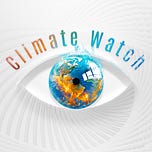When we talk about reducing carbon emissions, “carbon” often serves as a shorthand for a group of greenhouse gases—including carbon dioxide, methane, and nitrous oxide.
Today, we’re diving into the second most talked-about gas on that list: methane—a powerful climate pollutant that’s often overshadowed by the focus on carbon dioxide.
Like CO₂, methane is odorless and colorless, making it hard to detect.
But over a 20-year period, it’s 80 times more potent at warming the planet.
And it’s leaking—from landfills, pipelines, and even livestock.
Yet according to the International Energy Agency, only a handful of countries and companies have developed real plans to cut methane emissions—and even fewer can show verified progress.
The United Nations is now urging faster and more comprehensive action to track and reduce these emissions.
Why is methane so critical to our climate goals? Why isn’t it getting more attention?
And what should we be doing about it?
In this episode, I speak with Marcelo Mena, CEO of the Global Methane Hub and former environment minister of Chile.
Shownotes:
· Where methane emissions come from (hint: it’s not just cow burps)
· Why methane accounts for nearly half of today’s warming
· How countries and companies can cut emissions using existing tools—often at low or no cost
· Why global cooperation on methane is gaining real momentum











